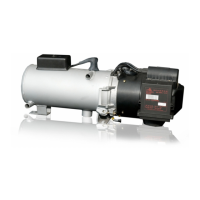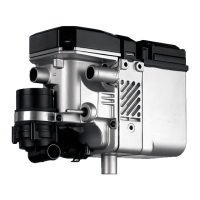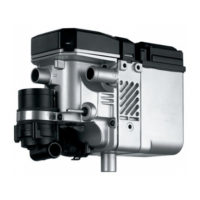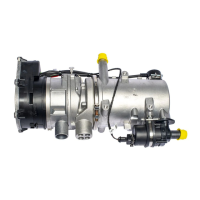Marine heating system Installation Instructions
© Webasto Global Comfort Solutions
®
31
10.3 Water circulation
10.3.1 Pipe material selection
Hot water circulation: Plastic and copper pipes or rubber hoses can be used.
Material selection depends on boat type, operating conditions (salty sea air) and customer
requirements.
Plastic pipes
• Advantages: small weight, corrosion-resistant, good insulating properties, easy to install
• Only use pipes with a temperature resistance ≥ 100°C.
• Consider the temperature expansion coefficient.
Copper pipes
• Advantages: easy to install, small friction losses, small expansion coefficient
• smallest curve radius: 8 x diameter.
• available with and without insulation. Pipes without insulation can be used as heat sources
(smaller heating elements).
• Be aware of corrosion sensitivity in contact with other materials.
• Hard or soft solder pipes, connect with screw thread connecting rings.
Rubber hoses
• Advantages: no corrosion, good insulation properties, very easy to install.
• Avoid sagging (otherwise air locks)
• Avoid kinks
• Only use pipes with a temperature resistance ≥ 100°C.
10.3.2 Routing pipes and hoses
• Secure pipes/hoses without tension applied.
• Plastic or copper pipes: sliding bearings in clamps and expansion elbows in pipelines
(longitudinal expansion).
• Pipe connection to circulation pump and to heater with rubber grommets (sound conduction)
• Route horizontally if possible (simpler to bleed).
• Route hoses as short as possible. No unnecessary curves.
10.3.2.1 Longitudinal expansion
Pay attention to linear expansion when routing.
For example, longitudinal expansions at a 60 K temperature difference:
• Plastic pipes: approx. 1%
• Copper pipes: approx. 0.1% and
• Rubber pipe: elasticity compensates.

